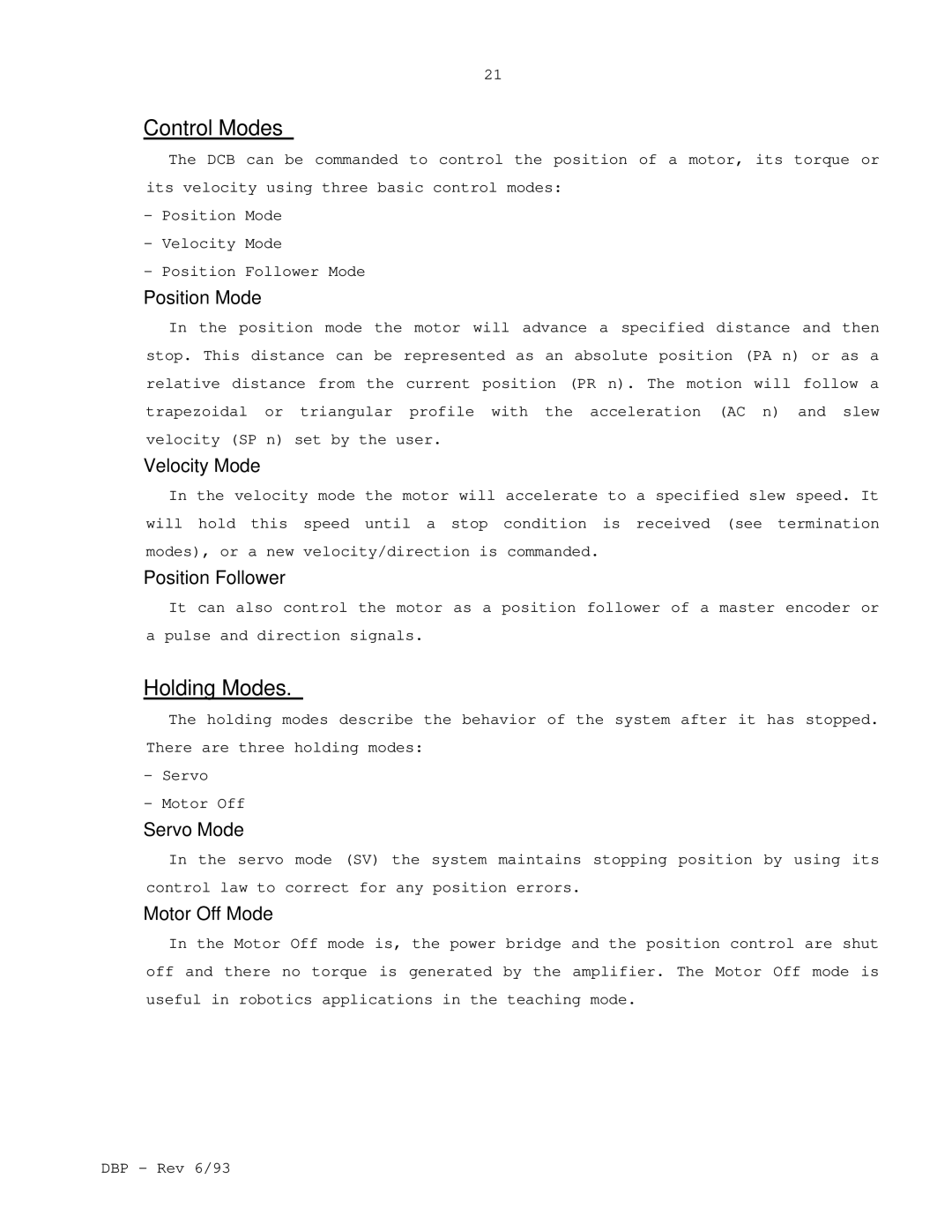21
Control Modes
The DCB can be commanded to control the position of a motor, its torque or its velocity using three basic control modes:
-Position Mode
-Velocity Mode
-Position Follower Mode
Position Mode
In the position mode the motor will advance a specified distance and then stop. This distance can be represented as an absolute position (PA n) or as a relative distance from the current position (PR n). The motion will follow a trapezoidal or triangular profile with the acceleration (AC n) and slew velocity (SP n) set by the user.
Velocity Mode
In the velocity mode the motor will accelerate to a specified slew speed. It will hold this speed until a stop condition is received (see termination modes), or a new velocity/direction is commanded.
Position Follower
It can also control the motor as a position follower of a master encoder or a pulse and direction signals.
Holding Modes.
The holding modes describe the behavior of the system after it has stopped. There are three holding modes:
-Servo
-Motor Off
Servo Mode
In the servo mode (SV) the system maintains stopping position by using its control law to correct for any position errors.
Motor Off Mode
In the Motor Off mode is, the power bridge and the position control are shut off and there no torque is generated by the amplifier. The Motor Off mode is useful in robotics applications in the teaching mode.
DBP - Rev 6/93
